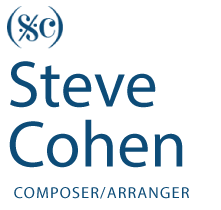This is a question I get asked all the time; "What is your piece about?"
Usually, I have the answer ready ahead of time, and I reply, "The piece is about 12 minutes." (Or whatever the duration is; it varies from piece to piece.) This is what comes of a childhood spent reading "Snappy Answers to Stupid Questions" in Mad Magazine.
After they've laughed, or haven't laughed, I'm usually pressed for a more serious answer, and serious answers require some thought. So here are some thoughts.
To a real musician, music isn't about anything except itself. It's about form, structure, sonority, harmony, counterpoint, orchestral color, etc. Sure, there's some subconscious thought about why this chord, or that turn of phrase was chosen, and there's usually some emotion that determined whatever choice was made. But these emotions are very difficult to express with words. If I could express my thoughts with words, I'd have written a novel instead of a sonata. Once I've finished my sonata, someone invariably asks me for words to explain what words cannot explain.
When I was much younger, my program notes were highly technical analyses of what I wrote. You'd need a PhD in Music Theory to understand them. The music is much more accessible than those program notes.
Now that I'm older, I'm much less inclined to bore the reader with too much detail. But I have to tell them something. And so I tell them a story.
I'll tell them a story about how and why and when the piece was written. Who commissioned it and for what reason? How long did I work on it? If the piece wasn't written on commission, what inspired me to write it?
Such a story, plus some very general descriptions of the structure, usually passes for some acceptable program notes.
But the story doesn't end there.
Whenever I attend a performance of my music, people always approach me afterwards and tell me what the music suggested to them. Some of these descriptions can get very colorful. I'm convinced that people really listen with their eyes first and their ears second, and if you don't supply a visual to go with your music, your listeners will supply the visual themselves.
Back in 2012, I was composer-in-residence for Bachanalia, a small string orchestra. Bachanalia's founder and artistic director, Nina Beilina, asked me to supply a new piece for part of a program called "Song of Songs." Every piece on the program was a song of some sort; a Canzona by J.S. Bach, Rachmaninoff's Vocalise, some sung excerpts from Shir HaShirim (Song of Songs), and de Falla's Seven Spanish Folk-Songs. I was to contribute another piece to this list, and - after some discussion - I made plans to write a medium-length piece for solo viola and strings, to be called "A Song For Strings." I didn't think the piece was about anything, except the 8 minutes or so of its running time, but composers are often the last to know what their music actually means.
The concert went very well. The performance venue was BargeMusic, which is an actual barge moored to a pier on the Brooklyn side of the East River in New York City. It's under the Brooklyn Bridge, and lines up with lower Manhattan.
During the intermission, someone in the audience approached me, and I could see she had been crying fairly recently.
She told me she enjoyed the piece, and said that while she listened, she was looking out at the river, and the Manhattan skyline. She said that she kept looking at where the twin towers of the World Trade Center used to be, and weren't anymore since 9/11/01, and, for her, the music became all about that loss, so acutely about it as to bring her to tears.
I can no longer hear that piece without thinking of what that listener told me. Through her response, the piece has gone from something rather abstract to something very specific.
Alas, I was not able to record the performance at BargeMusic, but I do have the MIDI playback from the score file. Take a listen, and see what the music is about to you.
